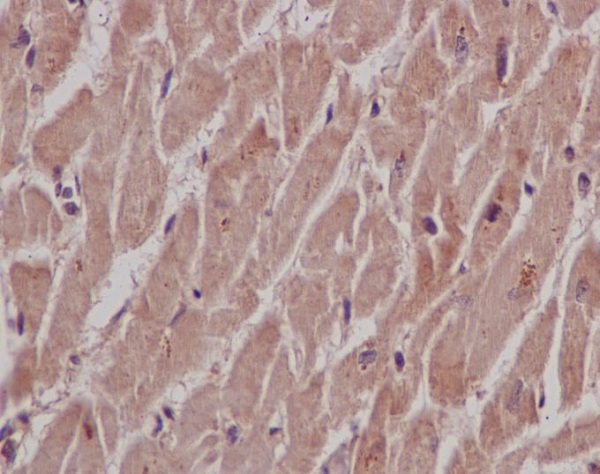

| WB | 1/500-1/1000 | Human,Mouse,Rat |
| IF | 1/20 | Human,Mouse,Rat |
| IHC | 1/50-1/100 | Human,Mouse,Rat |
| ICC | 1/50-1/200 | Human,Mouse,Rat |
| FCM | 咨询技术 | Human,Mouse,Rat |
| Elisa | 咨询技术 | Human,Mouse,Rat |
| Aliases | PTPN11; PTP2C; SHPTP2; Tyrosine-protein phosphatase non-receptor type 11; Protein-tyrosine phosphatase 1D; PTP-1D; Protein-tyrosine phosphatase 2C; PTP-2C; SH-PTP2; SHP-2; Shp2; SH-PTP3 |
| Entrez GeneID | 5781 |
| WB Predicted band size | Calculated MW: 68 kDa; Observed MW: 68 kDa |
| Host/Isotype | Rabbit IgG |
| Antibody Type | Primary antibody |
| Storage | Store at 4°C short term. Aliquot and store at -20°C long term. Avoid freeze/thaw cycles. |
| Species Reactivity | Human |
| Immunogen | A synthesized peptide derived from human SHP2 |
| Formulation | Purified antibody in PBS with 0.05% sodium azide. |
+ +
以下是关于SHP2抗体的3篇代表性文献的简要信息:
1. **文献名称**:*Structural and pathogenic diversity of SHP2 mutations in human disease*
**作者**:Tartaglia, M., Gelb, B.D.
**摘要**:综述了SHP2(PTPN11)基因突变在多种疾病(如努南综合征、白血病)中的结构特征和致病机制,强调突变导致SHP2酶活性异常对细胞信号通路的调控影响。
2. **文献名称**:*Allosteric inhibition of SHP2 phosphatase inhibits cancers driven by receptor tyrosine kinases*
**作者**:Chen, Y.N.P., LaMarche, M.J., et al.
**摘要**:报道了一种新型SHP2变构抑制剂(SHP099),通过稳定SHP2的非活性构象抑制其功能,在RTK驱动的癌细胞中显示出抗增殖活性,为靶向SHP2的癌症治疗提供依据。
3. **文献名称**:*SHP2 inhibition triggers anti-tumor immunity and synergizes with PD-1 blockade*
**作者**:Marin, E., et al.
**摘要**:发现抑制SHP2可增强肿瘤微环境中T细胞活性,并与PD-1抗体联用显著抑制肿瘤生长,揭示了SHP2在免疫调节中的关键作用及联合免疫治疗的潜力。
如需具体文献来源(期刊/年份),可进一步补充说明。
SHP2 (Src homology 2-containing protein tyrosine phosphatase 2), encoded by the *PTPN11* gene, is a non-receptor protein tyrosine phosphatase critical in intracellular signaling pathways, particularly the RAS/MAPK cascade. It regulates cell proliferation, differentiation, and survival by modulating phosphorylation states of signaling molecules. Dysregulated SHP2 activity, often due to gain-of-function mutations, is implicated in developmental disorders (e.g., Noonan syndrome) and cancers (e.g., leukemia, solid tumors).
SHP2 antibodies are essential tools for studying its expression, localization, and functional interactions. Structurally, SHP2 contains two N-terminal SH2 domains that mediate phosphotyrosine binding, a catalytic phosphatase domain, and a C-terminal tail. Auto-inhibition occurs when the N-SH2 domain blocks the catalytic site; activation requires conformational changes triggered by binding to phosphorylated signaling partners like IRS1 or Gab1.
Research-grade SHP2 antibodies are widely used in techniques such as Western blotting, immunohistochemistry, and immunoprecipitation to explore its role in disease mechanisms. Therapeutically, SHP2 inhibitors are under investigation, but antibodies targeting specific epitopes may offer alternative strategies to block aberrant SHP2 signaling or disrupt protein-protein interactions. Recent studies also highlight SHP2's role in immune checkpoint regulation, expanding its relevance in cancer immunotherapy.
Overall, SHP2 antibodies serve as both diagnostic reagents and potential therapeutic agents, bridging basic research and clinical translation in precision medicine.
×